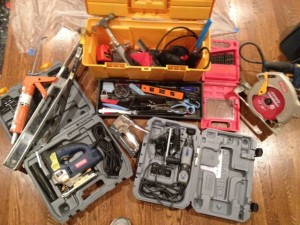Evidently, IBM wants to encourage women to enter science, technology, engineering, and mathematics (STEM) by telling them to hack a hair dryer. My first thought is that while I appreciate any technology company encouraging women into STEM, did they really have to pick a hair dryer? I would like to give them the benefit of the doubt that it’s a cheap piece of electronics, but let’s be real. By picking a hair dryer, they are reinforcing stereotypes about women and how we care about our looks. I initially thought I don’t even own a hair dryer, then I realized I may own two. I know there is one in my guest bathroom, left by a relative, and it sits there in case any guest wants to use it. I may have one of my own in my bathroom, bought over a decade, possibly two decades ago. I am not even sure if I still have it because it has been a decade at least since I have used it.
My second thought about #HackAHairDryer is, YOU’RE A FREAKING COMPUTER COMPANY! ENCOURAGE WOMEN TO WRITE CODE OR HACK A COMPUTER IN SOME WAY! Computer science is one of the most underrepresented fields, even among STEM fields, it is one of the worst. For goodness sakes IBM, you are a computer company, encourage women into computers. That is a field you should know rather well. Surely you can think of things women can hack in your own field, things that will not play into stereotypes.
My third thought is what age is this campaign aimed at? Hair dryers use electricity, and they produce heat. They are not exactly the safest things to hack. In IBM’s video, there are a few scenarios for “hacked” hair dryers that quite frankly worry me a bit. If a girl or women wants to hack a hair dryer, great, but I hope there is someone (man or women) around who would know when they are getting into dangerous territory.
I can MacGyver with the best of them. In truth, a whole lot of my hacking knowledge did not come from school. It came from playing with things, looking things up on the Internet, and talking with other people with experience. I don’t “hack” that much. I do have a propensity to take things apart just to look inside and see how they work, which is easy. The difficult part is getting them back together again and having the thing still work as intended.
A final thought I have is aimed at any inspiring engineer. If you don’t like to hack, if you have never hacked anything, my personal opinion is that this means nothing to your aspirations to be an engineer or scientist. Don’t let anyone tell you, you can’t be an engineer or scientist because X. I can’t remember hacking a single thing before college. I can’t remember hacking a single thing as part of my undergraduate or graduate school experience. My education did involve some hands on stuff and science labs, but it did not involve hacking. Most of engineering education is theory and reality of design. That is, first you are taught the theory as to how something should work. Then you are taught how it doesn’t always work like the theory, so here are some empirical equations with fudge factors that do work. Now throw in some safety factors. Ta la, you have your design.
So young women, hack if you want to, whatever it is you want to hack. Explore the world. Stay curious. Learn how things work. Learn ALL subjects and find the ones that interest you the most, no matter what they are.
IBM, back off the hashtags. Do something actually meaningful that will encourage women into STEM like sponsoring science fairs or building competitions or sponsoring college scholarships.



